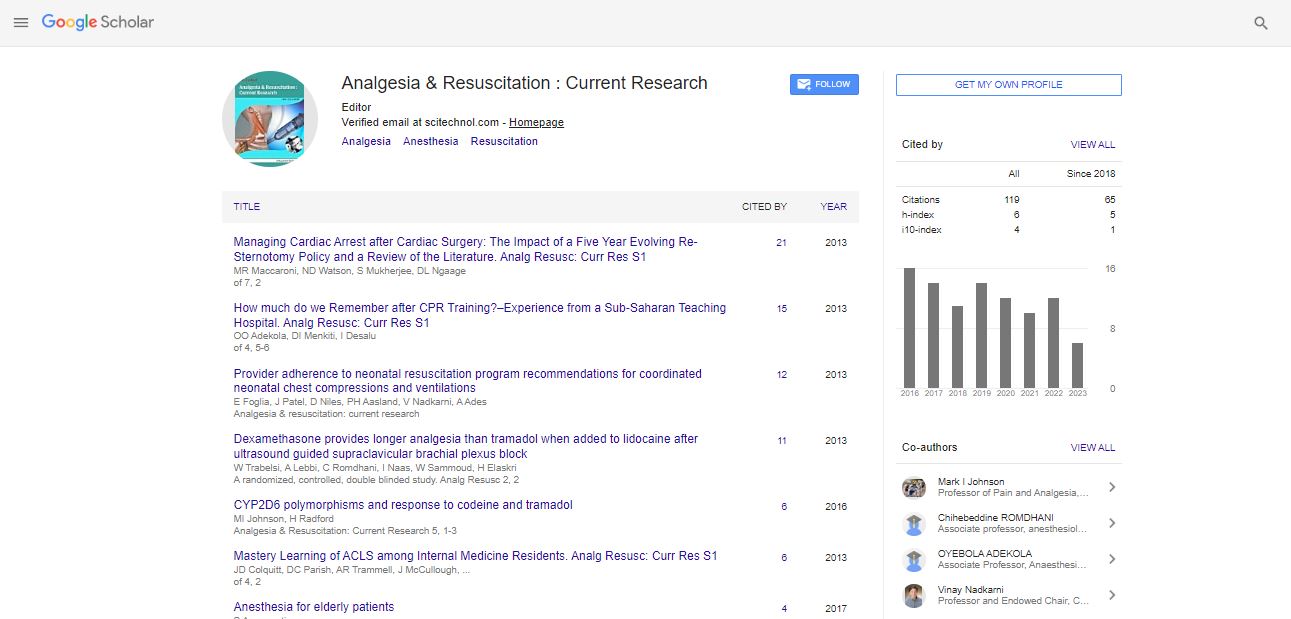Radiofrequency neurotomy for chronic cervical facet joint pain
Kailash Kothari
Pain Clinic of India Pvt. Ltd., India
: Analg Resusc: Curr Res
Abstract
Chronic neck and arm pain or cervicobrachialgia commonly occurs with the degeneration of cervical spine. Cervical medial branch block is commonly done pain management procedure for relieving this pain. We will discuss the application of radiofrequency (RF) neurotomies of cervical medial branches in patients with cervicobrachialgia and the factors which can influence the treatment outcome. Surgeon’s understanding of fluoroscopic anatomy is very important in placement of the RF needle, and in turn achieving better results. Demographic data, types of pain distribution, responses of double controlled blocks, and long term relief of pain after one or two diagnostic blocks, electrical stimulation parameters, numbers and levels of neurotomies, and surgical outcomes at 6 months are important parameters to discuss. It is recommended to do a good sensory and motor stimulation before ablation to improve the long term results. It is important to ablate a level above and below the suspected painful level to achieve good results. Cervical medial branch neurotomy is considered useful therapeutic modality for the management of cervicobrachialgia in selected patients, using good clinical and diagnostic pain management techniques in patients with degenerative zygapophyseal disorders.
Biography
Kailash Kothari is pioneer spine and pain consultant in India. He has completed his MBBS and MD from Pune University, Maharashtra, India. He is founder and director of Pain clinic of India Pvt. Ltd. (PCI) with 9 branches in Mumbai and Goa, India. He is practicing interventional pain management since 2000. He has travelled to many countries to treat patients and deliver lectures on pain management. He is renowned teacher, conducts one of most popular cadaveric pain training course called Comprehensive Interventional Pain Management (CIPM) for last 8 years and he is the director of pain fellowship at PCI. He is active member of many national and international pain societies. He is invited faculty for more than 100 national and international conferences in many countries. His interest is mainly in minimally invasive pain management and endoscopic spine procedures.
 Spanish
Spanish  Chinese
Chinese  Russian
Russian  German
German  French
French  Japanese
Japanese  Portuguese
Portuguese  Hindi
Hindi 
